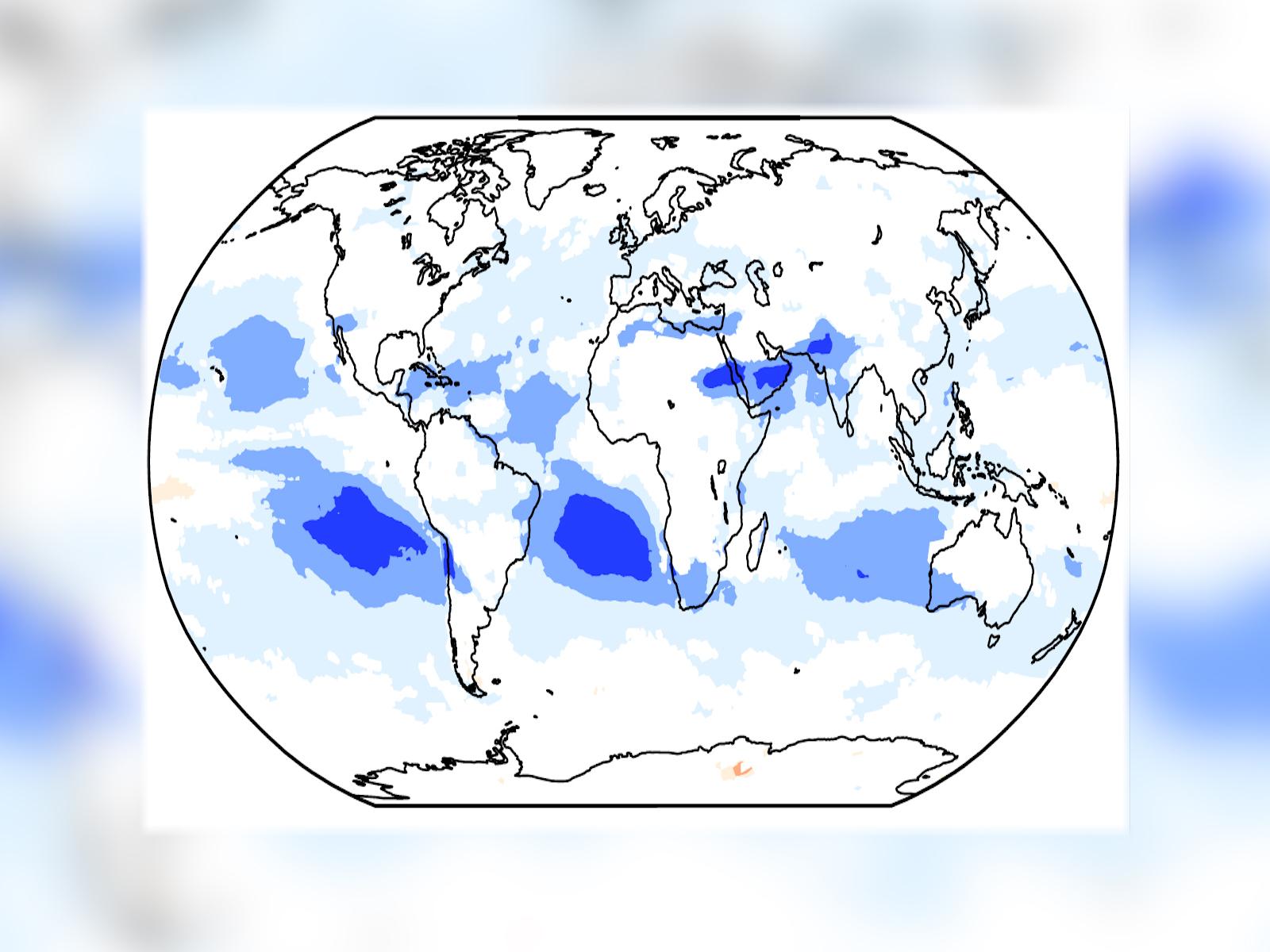A New Experimental Strategy Identifies Sources of Undesirable Model Sensitivities
Quantifying the numerical errors in global simulations of atmospheric clouds and attributing them to components in the computational model

The systematic and substantial decreases in cloud cover suggest the model results are sensitive to computational details and imply that weather and climate simulations made with infrequent calculations have significant numerical errors.
(Image by Shixuan Zhang | Pacific Northwest National Laboratory)
The Science
Computational models used in weather and climate prediction unfailingly contain errors traceable to their limited temporal resolution. At lower temporal resolutions, a numerical model recalculates the properties of the atmosphere less often and may not be able to capture features of rapidly evolving phenomena. This study shows these errors can result in significant amounts of undesirable sensitivity, or spurious model responses to small changes, in the atmospheric clouds simulated by a global model. Although the complex interactions between physical phenomena make pinpointing the exact sources of such errors difficult, researchers designed a series of numerical experiments to identify the model components causing the undesirable sensitivities in different types of clouds globally.
The Impact
This study is the first to demonstrate a method for systematically attributing temporal resolution error and the resulting undesirable sensitivities in a global atmospheric model. Researchers can apply this method to all weather and climate models. Developing error attribution capabilities is a necessary first step towards reducing errors and making predictions, from near-term local rain events to long-term regional and global-scale temperature changes, more accurate.
Summary
This study assesses the relative importance of temporal resolution error in present-day climate simulations of the atmosphere component of the Energy Exascale Earth System Model version 1 (EAMv1). It shows that increasing the temporal resolution in all major parts of the model by a factor of six leads to significant changes in the simulated long-term mean temperature, humidity, and cloud amounts. Researchers carried out a high-level attribution of the temporal resolution error by either varying the resolution of various EAM components or revising the frequency of information exchange between components. The analysis shows the frequency of information exchange primarily affects subtropical low-cloud amounts, while the temporal resolution used for representing cloud processes strongly affects clouds in the upper troposphere. This work focuses on a specific model, but the presented experimentation strategy has general value for helping identify and understand sources of temporal resolution error in sophisticated multi-component models (i.e., weather and climate models).
PNNL Contact
Hui Wan, Pacific Northwest National Laboratory, Hui.Wan@pnnl.gov
Funding
U.S. Department of Energy Biological and Environmental Research program, Earth and Environmental System Modeling Program, Earth System Model Development program area and U.S. Department of Energy Scientific Discovery through Advanced Computing program.
Published: May 3, 2021
H. Wan, S. Zhang, P. J. Rasch, V. E. Larson, X. Zeng, and H. Yan. “Quantifying and attributing time step sensitivities in present-day climate simulations conducted with EAMv1”, Geoscientific Model Development, 14, 1921–1948, (2021). [DOI: 10.5194/gmd-14-1921-2021]